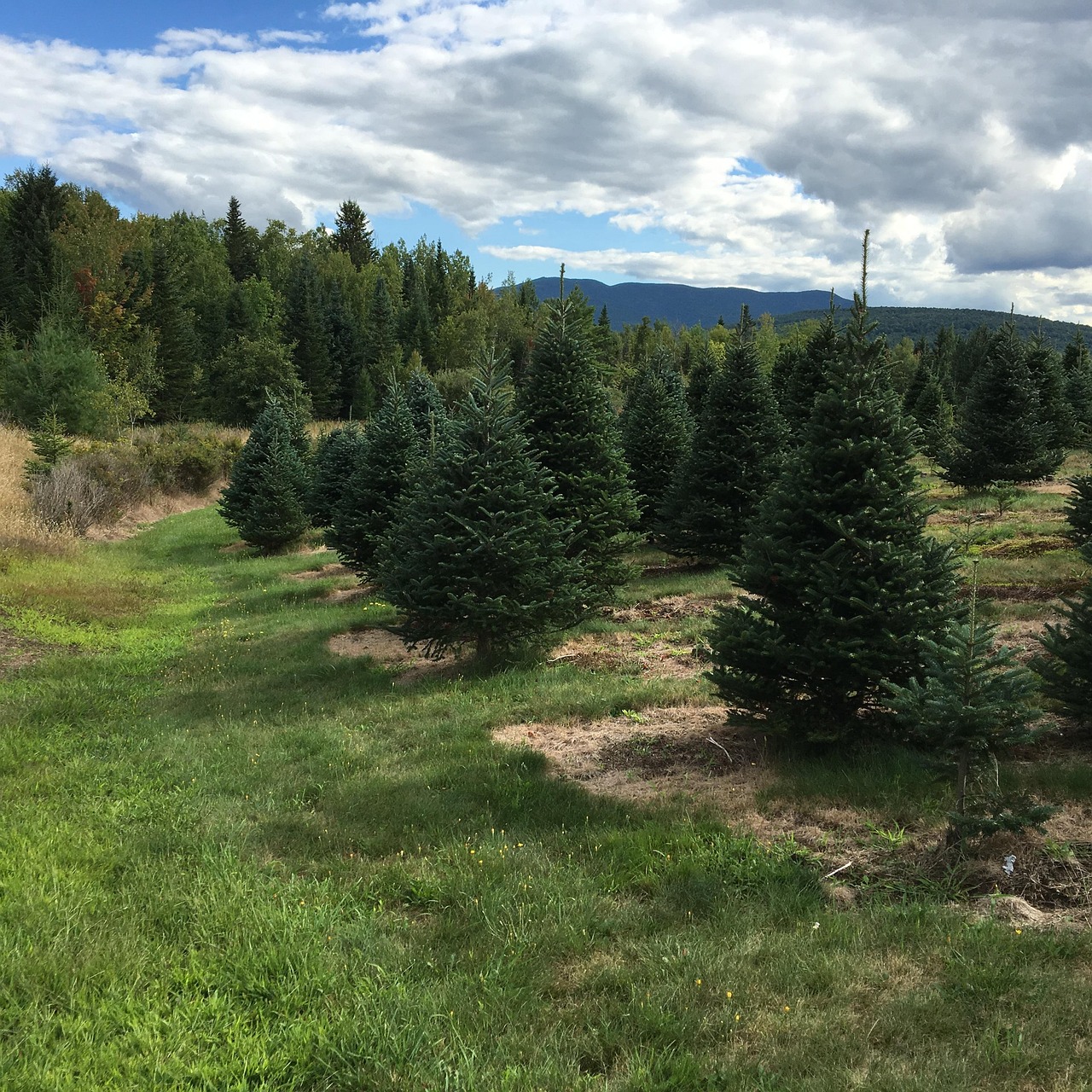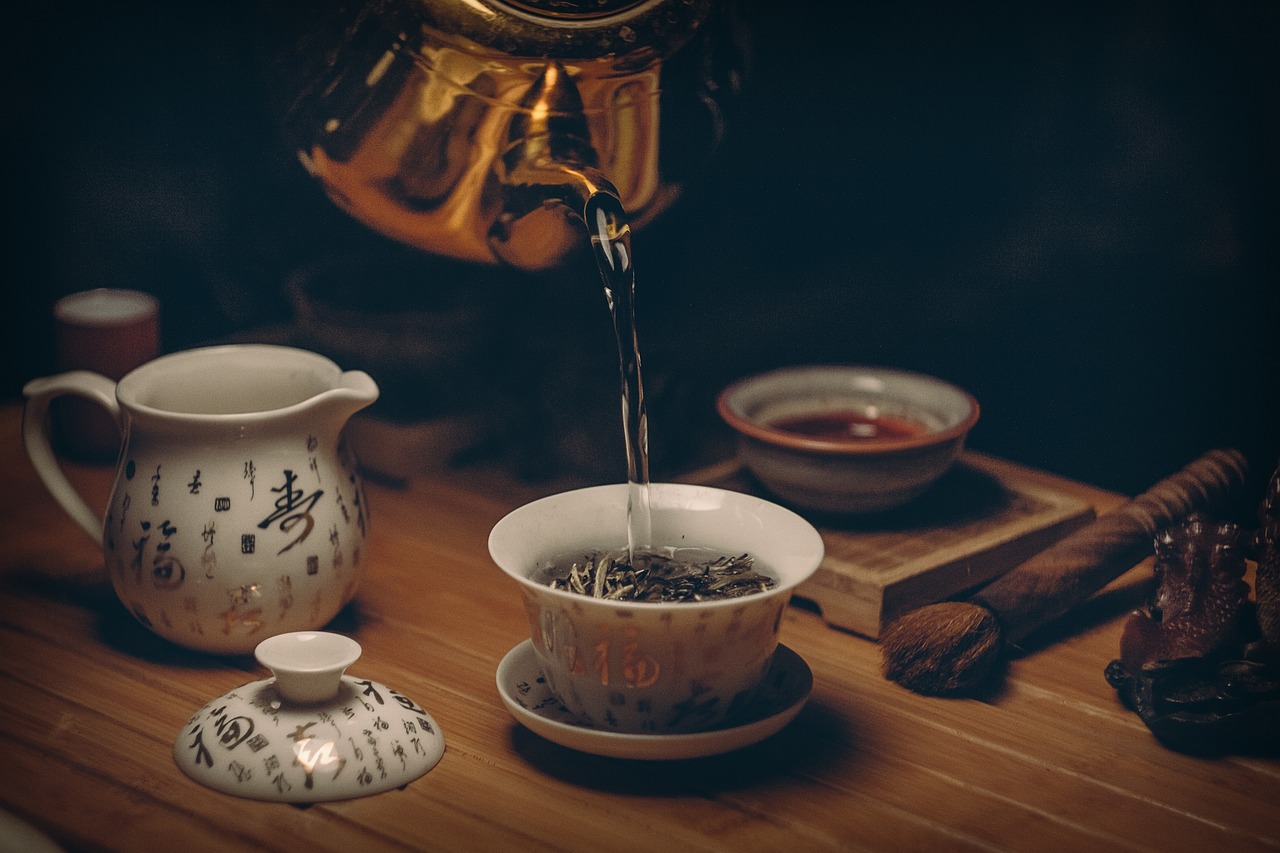Balsam fir tea can be safely consumed in moderation by most people. However, it is essential to be aware of potential side effects and consult with a healthcare professional, especially if you have underlying health issues or are pregnant.
Balsam fir (Abies balsamea) is a coniferous tree native to North America. It is well-known for its aromatic resin and has been traditionally used for various purposes, including making tea. The tea is often praised for its potential health benefits, which include antioxidant properties and soothing effects. However, like any herbal tea, it is vital to understand both the benefits and risks associated with its consumption.

The leaves and needles of the balsam fir tree are used to make the tea. The process involves steeping the fresh or dried needles in hot water, allowing the nutrients and flavors to infuse into the tea. This beverage is often enjoyed for its unique taste, reminiscent of pine, and its fragrant aroma.
Potential Health Benefits
Balsam fir tea is believed to offer several health benefits. Here are some of the notable ones:
- Rich in Antioxidants: Balsam fir needles contain antioxidants that help combat oxidative stress in the body.
- Anti-inflammatory Properties: Some studies suggest that balsam fir may help reduce inflammation, which can be beneficial for various health conditions.
- Respiratory Relief: The aromatic qualities of balsam fir tea may aid in relieving respiratory issues, such as congestion or coughs.
- Immune Support: The nutrients in balsam fir may contribute to strengthening the immune system.
While these benefits are promising, scientific research on balsam fir tea specifically is limited. Most information is derived from traditional uses and anecdotal evidence. Therefore, it is essential to approach these claims with caution and seek more research-based insights if needed.

Possible Risks and Side Effects
Even though balsam fir tea has potential health benefits, it is not without risks. Some individuals may experience side effects from consuming this herbal tea. Here are some of the potential risks associated with balsam fir tea:
- Allergic Reactions: People who are allergic to pine trees may also react negatively to balsam fir tea, leading to symptoms like itching, swelling, or difficulty breathing.
- Digestive Issues: Some users report gastrointestinal discomfort, including nausea or diarrhea after consuming the tea.
- Pregnancy Concerns: Pregnant women should avoid balsam fir tea due to a lack of safety data regarding its effects during pregnancy.
- Medication Interactions: Balsam fir may interact with certain medications. It is crucial to consult a healthcare professional if you are on medication.
The safety of balsam fir tea largely depends on individual health conditions and sensitivities. It is always advisable to start with a small amount if you are trying it for the first time and monitor your body’s responses closely.
Preparation and Consumption Tips
If you decide to try balsam fir tea, consider the following tips for safe preparation and consumption:

- Use Fresh Ingredients: Whenever possible, use fresh balsam fir needles. They tend to have a more robust flavor and higher nutrient content than dried versions.
- Steep Properly: Steep the needles in boiling water for 10-15 minutes to ensure adequate infusion of flavors and nutrients.
- Moderation is Key: Limit your intake to one or two cups a day to avoid potential side effects.
- Consult a Professional: If you have any health concerns or are on medication, consult a healthcare provider before trying balsam fir tea.
By following these guidelines, you can enjoy balsam fir tea while minimizing potential risks. Always listen to your body and prioritize your health when exploring new herbal options.
Traditional Uses of Balsam Fir
Balsam fir has a rich history of use among indigenous peoples of North America. It was valued not only for its wood but also for its various medicinal properties. Understanding these traditional uses can provide insight into the potential benefits of balsam fir tea.
- Medicinal Applications: Indigenous cultures used various parts of the balsam fir tree to treat ailments such as colds, coughs, and respiratory issues. The tea was often consumed to help alleviate symptoms associated with these conditions.
- Wound Healing: The resin from balsam fir was used topically to promote healing of cuts and abrasions. This practice highlights the tree’s antimicrobial properties.
- Detoxification: Some tribes believed that balsam fir could help detoxify the body. Drinking the tea was thought to support overall health.
These traditional uses are rooted in centuries of experience and observation. While modern science is beginning to explore these benefits, much of the knowledge remains based on historical practices.
Scientific Research on Balsam Fir
Although balsam fir has been used for many years, scientific research is still catching up. Studies on balsam fir primarily focus on its essential oils and extracts rather than the tea itself. Here are some key findings from current research:

| Study Focus | Findings |
|---|---|
| Antioxidant Properties | Research shows that balsam fir contains compounds that exhibit strong antioxidant activity, which can help reduce oxidative stress. |
| Anti-inflammatory Effects | Some studies suggest that extracts from balsam fir may possess anti-inflammatory properties, potentially benefiting those with inflammatory conditions. |
| Essential Oils | The essential oils derived from balsam fir have shown antimicrobial activity, making them useful in natural remedies. |
These findings indicate that balsam fir may have various therapeutic applications. However, more specific research on balsam fir tea is needed to confirm its health benefits definitively.
How to Source Balsam Fir for Tea
If you’re interested in making balsam fir tea, sourcing the right ingredients is crucial. Here are some tips on how to find quality balsam fir needles:
- Wildcrafting: If you live in a region where balsam fir trees grow, you can collect fresh needles yourself. Ensure you correctly identify the tree to avoid any confusion with non-edible species.
- Local Farmers’ Markets: Check local farmers’ markets or herbal shops that may offer fresh or dried balsam fir needles harvested sustainably.
- Online Retailers: Several online herbal retailers sell dried balsam fir needles. Look for reputable sources that provide information about their sourcing practices.
- Herbalists: Consulting with herbalists can provide guidance on finding quality ingredients and using them safely.
When sourcing balsam fir needles, prioritize quality and sustainability. Avoid areas that may be contaminated with pollutants or pesticides.
Flavor Profile and Culinary Uses
Balsam fir tea has a unique flavor profile that is worth exploring. The taste can be described as refreshing, with a hint of pine and a slightly sweet undertone. Here are some culinary uses for balsam fir beyond just tea:
- Culinary Infusions: Balsam fir needles can be infused into syrups or honeys, adding a subtle pine flavor to desserts or beverages.
- Flavoring Marinades: Incorporate chopped balsam fir needles into marinades for meats to impart a unique flavor.
- Aromatic Sachets: Dried needles can be used in sachets for a fragrant addition to closets or drawers.
This versatility allows you to enjoy the distinctive qualities of balsam fir in various culinary creations, enhancing dishes with its aromatic profile.
Environmental Considerations
As interest in using natural products increases, it is essential to consider the environmental impact of harvesting balsam fir. Sustainable practices should be prioritized to protect this valuable resource. Here are some considerations:
- Sustainable Harvesting: Only take what you need when gathering needles from wild trees. Avoid overharvesting and ensure the tree remains healthy.
- Support Local Sources: Purchasing from local suppliers who practice sustainable harvesting helps support both the environment and local economies.
- Avoid Contaminated Areas: Be mindful of where you collect materials, ensuring they are free from pollutants or harmful chemicals.
By being conscious of these factors, you can enjoy balsam fir tea while contributing to the well-being of the environment.
Potential Interactions with Medications
When considering the consumption of balsam fir tea, it is crucial to be aware of potential interactions with medications. Certain compounds found in balsam fir may affect the way medications work in the body. Here are some key points to consider:
- Blood Thinners: Balsam fir may have anticoagulant properties, which could enhance the effect of blood-thinning medications such as warfarin. This interaction may increase the risk of bleeding.
- Diabetes Medications: Some research suggests that balsam fir may lower blood sugar levels, which can interfere with diabetes medications, potentially leading to hypoglycemia.
- Antidepressants: There is limited evidence of possible interactions between balsam fir and certain antidepressants. Consulting a healthcare provider is advisable if you are on these medications.
Because of these potential interactions, it is essential to consult a healthcare professional before adding balsam fir tea to your routine, especially if you are taking prescription medications.
Who Should Avoid Balsam Fir Tea?
While many people can safely enjoy balsam fir tea, certain individuals should exercise caution or avoid it altogether. Here are groups of people who might need to refrain from consuming this herbal tea:
- Pregnant Women: Due to a lack of research on the effects of balsam fir during pregnancy, it is best to avoid this tea altogether.
- Nursing Mothers: Similar to pregnant women, nursing mothers should avoid balsam fir tea until more is known about its effects on breast milk and infants.
- Individuals with Allergies: People with known allergies to pine trees or related species should steer clear of balsam fir tea to avoid allergic reactions.
- Those with Pre-existing Conditions: Individuals with liver or kidney issues should consult their healthcare provider before consuming balsam fir tea due to its potential effects on these organs.
Always prioritize safety and consult a healthcare professional if you have any concerns about your health or dietary choices.
How to Incorporate Balsam Fir Tea into Your Routine
If you decide that balsam fir tea is a suitable addition to your wellness routine, here are some tips on how to incorporate it effectively:
- Start Slowly: Begin with a small amount to see how your body reacts. One cup per day is a good starting point.
- Pair with Other Herbs: Consider blending balsam fir tea with other herbs like chamomile or peppermint for added flavor and benefits.
- Create a Ritual: Make your tea preparation a mindful ritual. Take time to appreciate the aromas and flavors as you brew your tea.
- Track Your Reactions: Keep a journal of how you feel after consuming the tea. This can help you identify any adverse reactions or benefits.
Incorporating balsam fir tea into your routine can be enjoyable and beneficial, provided that you follow safety guidelines and listen to your body.
Recipes Featuring Balsam Fir Tea
Balsam fir tea can be used in various recipes for an aromatic twist. Here are some ideas for incorporating this unique tea into your culinary creations:
Balsam Fir Infused Syrup
This syrup can be drizzled over pancakes, waffles, or desserts for a delightful flavor.
- Ingredients:
- 1 cup water
- 1 cup sugar
- 1/4 cup fresh balsam fir needles
- Instructions:
- Bring water to a boil in a saucepan.
- Add sugar and stir until dissolved.
- Add balsam fir needles and remove from heat.
- Let steep for 30 minutes, then strain the mixture into a clean bottle.
- Store in the refrigerator for up to one month.
Balsam Fir Tea Infused Smoothie
This refreshing smoothie combines the unique flavor of balsam fir with fruits for a nutritious boost.
- Ingredients:
- 1 cup brewed balsam fir tea (cooled)
- 1 banana
- 1/2 cup spinach
- 1/2 cup almond milk
- 1 tablespoon honey (optional)
- Instructions:
- Add all ingredients to a blender and blend until smooth.
- Taste and adjust sweetness if needed by adding honey.
These recipes showcase the versatility of balsam fir tea, allowing you to explore its flavors in various forms while enjoying its potential health benefits.
Exploring the Cultural Significance of Balsam Fir
Balsam fir is not only appreciated for its health benefits but also holds cultural significance in various communities. In many Native American traditions, the tree has been revered as a symbol of healing and protection. Its aromatic qualities have made it a staple in spiritual practices, where the needles and resin are often used in ceremonies.
- Spiritual Practices: The aromatic properties of balsam fir are thought to purify spaces and promote a sense of calm. Burning the resin can create a fragrant smoke used in rituals.
- Craftsmanship: The wood from balsam fir is lightweight and durable, making it ideal for crafting items such as furniture, tools, and even musical instruments.
- Traditional Medicine: Beyond tea, various parts of the balsam fir tree are used in traditional remedies, demonstrating a deep understanding of local flora’s medicinal properties.
This cultural connection enriches the experience of consuming balsam fir tea, as it links modern health practices to ancient traditions and wisdom. Understanding this background can enhance your appreciation for the tea and its benefits.
Environmental Benefits of Balsam Fir Trees
Balsam fir trees play a crucial role in their ecosystems. Here are some environmental benefits associated with these trees:
- Carbon Sequestration: Like all trees, balsam firs absorb carbon dioxide from the atmosphere, helping to mitigate climate change.
- Habitat for Wildlife: Balsam fir forests provide shelter and food for various wildlife species, including birds, mammals, and insects.
- Soil Preservation: The root systems of balsam fir trees help prevent soil erosion and maintain soil health by stabilizing the ground.
By choosing to consume products derived from balsam fir, such as tea, you are also supporting sustainable practices that contribute to environmental health. It is vital to ensure that harvesting practices respect the ecosystem and maintain biodiversity.
Final Thoughts
In conclusion, balsam fir tea presents an intriguing combination of flavor, tradition, and potential health benefits. While it can be safely consumed by most individuals, awareness of potential risks and interactions is essential. As with any herbal product, moderation is key, and consulting with a healthcare professional is advisable, especially for those with specific health conditions or concerns.
The rich cultural significance of balsam fir adds depth to the experience of drinking this tea. It connects users to ancient traditions and highlights the importance of environmental stewardship. By incorporating balsam fir tea into your routine, you not only enjoy its unique taste but also participate in the preservation of cultural heritage and ecological balance.
As more research emerges regarding the health benefits and safe consumption practices surrounding balsam fir tea, it will continue to be a topic of interest for herbal enthusiasts and health-conscious individuals alike. Whether enjoyed as a soothing beverage or used creatively in culinary applications, balsam fir tea offers a diverse array of possibilities for those looking to explore natural alternatives in their diets.
